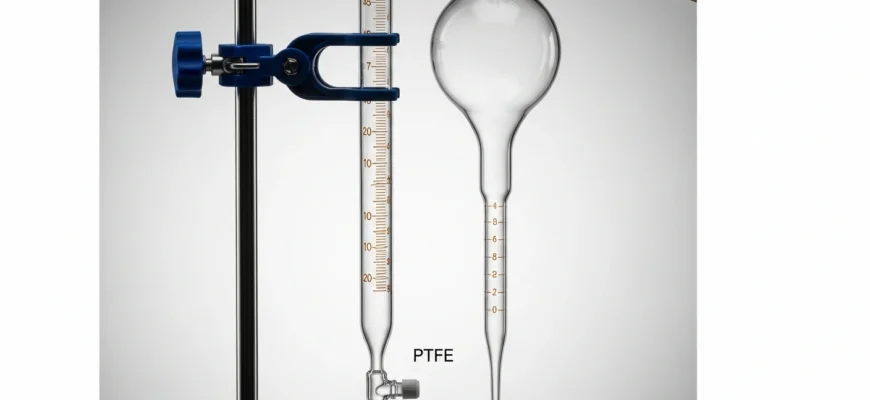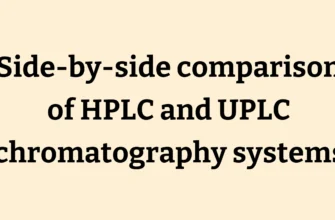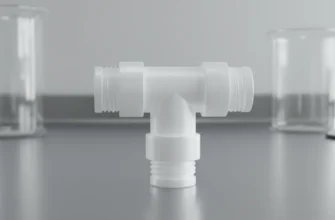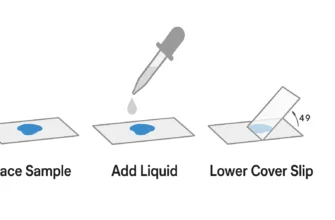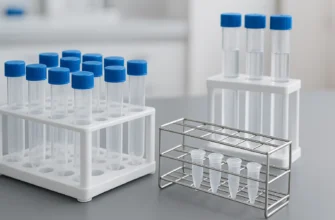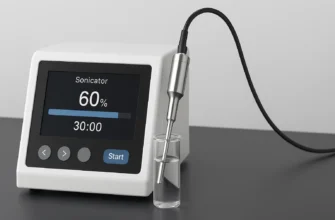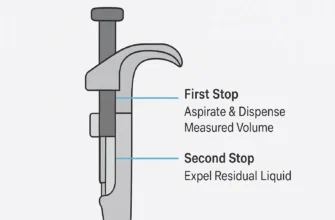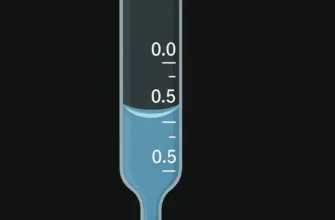In the world of analytical chemistry, the pursuit of reliable results hinges on one fundamental principle: precision. Every drop, every milliliter, every measurement contributes to the validity of an experiment. In this context, two pieces of laboratory glassware stand out as pillars of accuracy: the burette and the pipette. Though both are designed for meticulous liquid measurement, they serve distinct purposes and operate on different principles. Understanding their unique strengths and applications is not merely academic—it is essential for anyone serious about quantitative science.
The Foundation of Scientific Accuracy
Accurate volume measurement is the bedrock of volumetric analysis. Whether determining the concentration of a chemical solution or preparing precise dilutions, the quality of the data is directly tied to the quality of the measurement. An error of a fraction of a milliliter can cascade into significant inaccuracies, compromising research and analysis. The global demand for such precision is reflected in a growing market; for instance, the chemical analysis services market is valued at approximately USD 4.7 billion in 2024 and is expected to expand significantly.
Navigating the World of Volume Measurement with Burettes and Pipettes
Burettes and pipettes are specialized tools designed to deliver liquids with a high degree of accuracy, far surpassing that of a graduated cylinder or a simple eye dropper. The burette excels at dispensing variable, precise volumes, making it indispensable for titrations. The pipette, in its most common form, is engineered to transfer a specific, fixed volume with exceptional reproducibility. Choosing the correct instrument is the first step toward a successful experiment.
Article Overview: Defining, Differentiating, and Optimizing Usage
This article provides a comprehensive comparison of burettes and pipettes. We will define each instrument, conduct a head-to-head analysis of their functionality and accuracy, explore their various types, and detail the best practices for their use. By the end, you will have a clear understanding of when and how to use each tool to achieve the most reliable and reproducible results in your laboratory work.
Understanding the Essentials: Defining Burettes and Pipettes
While both are essentially graduated glass tubes, their designs are tailored for different tasks in liquid measurement.
The Burette: Dispensing with Incremental Precision
A burette is a long, cylindrical piece of volumetric glassware with graduation marks running along its length. Its defining feature is a stopcock valve at the bottom, which allows the user to control the flow of liquid with high precision, dispensing it drop by drop if needed. The total volume dispensed is determined by subtracting the initial reading from the final reading. This design makes the burette the ideal tool for processes requiring the gradual addition of a reagent until a specific reaction, or End Point, is reached. The burette market reflects this specialized need, with the global burette segment generating USD 299.2 million in 2024.
The Pipette: Transferring Specific Volumes Accurately
A pipette is designed to transfer a predetermined volume of liquid from one container to another. Unlike a burette, it is not primarily used for dispensing variable amounts during a continuous process. The most accurate type, the volumetric pipette, features a large bulb in the middle and a single calibration mark to indicate a specific volume (e.g., 10 mL, 25 mL). Graduated pipettes offer more flexibility with multiple markings but are generally less precise than their volumetric counterparts. The widespread use of these instruments is evident, with the global pipettes market estimated at USD 1.51 billion in 2024.
Burette vs. Pipette: A Head-to-Head Comparison for Precision Liquid Measurement
To master these tools, one must understand their fundamental differences in design, accuracy, and operation.
Core Functionality and Design Philosophy
The primary functional difference lies in their method of delivery. A burette is designed to dispense a variable volume of liquid from zero up to its total capacity. Its long, narrow body and fine gradations are optimized for incremental delivery and precise reading of the change in volume. In contrast, a pipette is designed to transfer a fixed volume. It is filled to its calibration mark and then allowed to drain completely, delivering that single, highly accurate amount.
Accuracy and Precision: The Defining Differentiator
Accuracy is the key differentiator. A volumetric pipette is generally considered more accurate and precise for transferring a single, fixed volume. For example, a 10 mL Class A pipette has an error margin of just 0.2% (±0.02 mL). A 50 mL Class A burette has a similar tolerance (±0.05 mL), but the potential for error is compounded by the need for two readings (initial and final) and the manual control of the stopcock valve. Therefore, for preparing standard solutions or transferring an exact aliquot, the volumetric pipette is superior. The burette’s strength is its accuracy in dispensing variable volumes, a task for which a pipette is ill-suited.
Volume Range and Measurement Approach
Burettes are designed for a range of measurements. A 50 mL burette can accurately dispense any volume from a few drops up to its full capacity. The volume is measured subtractively (V_final – V_initial). Pipettes, especially volumetric ones, are calibrated for a single volume. While graduated pipettes offer a range, their primary purpose is still transferring, not titrating. This difference in approach dictates their roles in volumetric analysis.
Operational Differences and User Experience
Using a burette involves clamping it vertically, filling it past the zero mark, draining to remove air bubbles and set the initial volume, and then carefully manipulating the stopcock. Reading the volume requires avoiding parallax error. Using a pipette involves a pipette filler to draw liquid up to the calibration mark, then carefully releasing it into the target container, often touching the tip to the side of the vessel to ensure complete delivery. Each requires a distinct set of motor skills and adherence to best practices.
Key Applications: When to Choose Each Tool
The choice between a burette and a pipette is dictated by the task:
- Choose a Burette for: Titrations. This is the classic application, such as titrating hydrochloric acid with sodium hydroxide. It’s also ideal for any procedure that requires the controlled, incremental addition of a liquid to observe a reaction or reach a specific endpoint.
- Choose a Pipette for: Transferring a precise, fixed volume of a solution, standard, or sample. This is common when preparing dilutions in a volumetric flask or setting up a series of reactions that require identical starting volumes.
Types and Variations: Expanding Your Laboratory Toolkit
The basic designs of burettes and pipettes have been adapted into various forms to meet diverse laboratory needs.
Burette Variations for Diverse Needs
Standard glass burettes, known as volumetric burettes, are the most common. They are typically made of durable borosilicate glass with a PTFE stopcock for chemical resistance. For enhanced readability, Schellbach burettes feature a blue stripe on a white background that constricts to a point at the meniscus. For automation and higher precision, digital burettes use a motor-driven piston and a digital display to dispense liquid with exceptional accuracy, minimizing human error. Piston burettes operate similarly, using a plunger mechanism, but may have a manual wheel instead of a digital interface. The market for these advanced tools is growing, with the Measured Volume Burette Set market projected to reach 1.72 (USD Billion) by 2034.
Pipette Variations for Specific Volume Requirements
The two main categories are volumetric and graduated pipettes. Volumetric pipettes are calibrated to deliver a single, highly accurate volume and are distinguished by their bulbous center. Graduated pipettes (Mohr and serological) have markings along their length to deliver various volumes, but with lower accuracy than volumetric types. For smaller volumes, micropipettes are essential tools in molecular biology and other fields, though they operate on a different, air-displacement mechanism.
Maximizing Accuracy: Best Practices, Calibration, and Troubleshooting
The inherent accuracy class of your chemical glassware means little if not paired with proper technique.
Mastering the Meniscus: Accurate Reading for Reliable Results
The meniscus is the curve in the upper surface of a liquid caused by surface tension. For transparent liquids like water, the reading should always be taken from the bottom of the meniscus. For opaque liquids like potassium permanganate, the top edge is used. To ensure accuracy, your eye must be level with the meniscus; reading from an angle (parallax error) will lead to incorrect measurements.
Calibration and Maintenance: Ensuring Lasting Precision
Volumetric glassware is calibrated by the manufacturer at a specific temperature (usually 20°C). Significant temperature changes in the lab can affect volume. For critical applications, glassware can be recalibrated in-house. Regular maintenance is crucial. Burettes should be cleaned thoroughly to ensure liquid drains uniformly without leaving droplets behind (“wetting”). The stopcock should be checked for leaks, as a slow drip can ruin a titration.
Common Sources of Error and How to Mitigate Them
- Air Bubbles: An air bubble trapped in the burette tip will be displaced during titration, leading to an erroneously high volume reading. Always ensure bubbles are expelled before taking the initial reading.
- Improper Drainage: Pipettes are calibrated for a specific drainage time. Rushing this process or blowing out the final drop (unless it’s a “blow-out” serological pipette) will result in inaccurate delivery.
- Cross-Contamination: Always rinse burettes and pipettes with a small amount of the solution they are to be filled with before use to prevent contamination from residual water or other chemicals.
Essential Laboratory Setup: Supporting Your Precision Measurements
The right accessories and complementary equipment are vital for efficient and accurate work.
Burette Support System
A burette must be held perfectly vertical in a burette clamp, which is attached to a retort stand. This stability is non-negotiable for accurate readings and safe operation. The stand should be placed on a level surface, often with a white tile or base to make color changes at the endpoint more visible.
Pipette Organization and Accessories
Pipettes should be stored vertically in a pipette stand to prevent breakage and contamination. A crucial accessory is the pipette filler or bulb, which is used to safely draw liquid into the pipette. Never use your mouth to pipette; it is dangerous and a major source of contamination.
Complementary Lab Equipment for Volumetric Analysis
Burettes and pipettes rarely work in isolation. The volumetric flask is a key partner, used to prepare solutions of a precise concentration, often using a liquid transferred via a pipette. Beakers and Erlenmeyer flasks serve as the receiving vessels for titrations and transfers. For routine dispensing of set volumes, a Bottle Top Dispenser can offer a convenient and accurate alternative to manual pipetting. The entire ecosystem of lab equipment contributes to the precision required, a factor driving the growth of a market expected to hit USD 85 billion by 2032.
Conclusion: Making Informed Choices for Reliable Scientific Results
In the landscape of precision liquid measurement, both the burette and the pipette are indispensable tools, not competitors. Their value is unlocked by understanding their distinct design philosophies and applying them to the appropriate tasks.
Recap of Key Differentiators: Accuracy, Volume Measurement, and Application
The burette is the master of variable volume dispensing, offering unparalleled control for titrations. The pipette is the champion of fixed volume transfer, providing superior accuracy for preparing solutions and aliquoting samples. Choosing a volumetric pipette to perform a titration is as misguided as using a burette to prepare a 25.00 mL standard solution.
The Synergy of Tool Selection and User Expertise
The ultimate precision of any measurement is a combination of the instrument’s accuracy class and the technician’s skill. A high-quality Class A burette can yield poor results in untrained hands, while a skilled analyst can achieve respectable precision even with Class B glassware. This synergy is crucial in all settings, from academic labs to pharmaceutical R&D, where spending exceeded $180 billion in 2023.
Embracing Best Practices for Consistent and Reproducible Laboratory Outcomes
Mastering these instruments means embracing the best practices that govern their use. From proper cleaning and handling to correctly reading the meniscus and ensuring proper calibration, these steps are not optional—they are integral to the scientific method. By selecting the right tool for the job and executing the procedure with care and expertise, you ensure that your measurements are not just numbers, but reliable data upon which sound scientific conclusions can be built.

